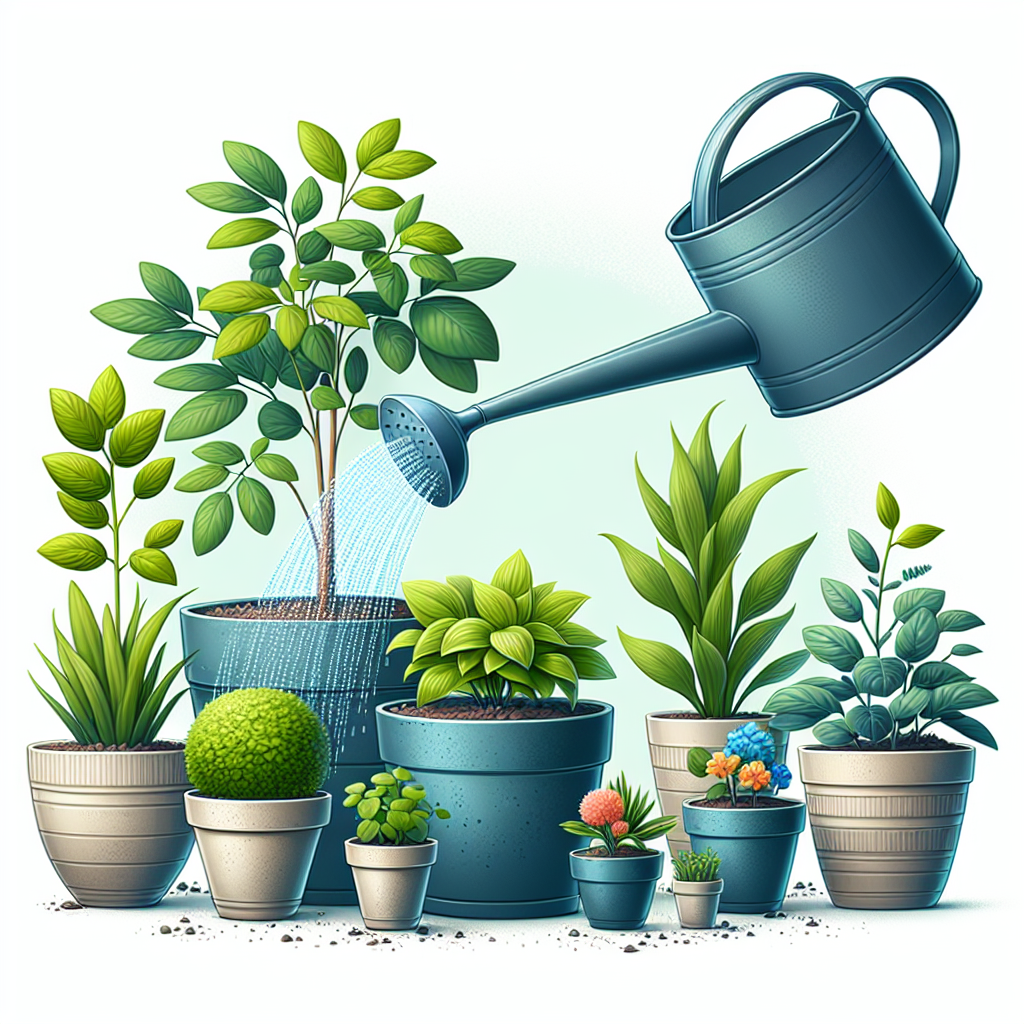Watering plants in pots may seem like a simple task, but it can actually be quite tricky to get right. Overwatering or underwatering can lead to the demise of your beloved plants, so it is important to understand the best practices for watering potted plants to ensure they thrive and flourish.
1. Choose the Right Potting Mix
One of the first steps in ensuring your potted plants receive the right amount of water is to choose the appropriate potting mix. A good quality potting mix will provide adequate drainage while retaining enough moisture for the plant’s roots to absorb. Look for a mix that contains ingredients such as perlite, vermiculite, or coconut coir to improve aeration and prevent soil compaction.
2. Use the Right Size Pot
The size of the pot you choose for your plant can also impact its watering needs. A pot that is too small will dry out quickly and require more frequent watering, while a pot that is too large may hold on to excess water and lead to root rot. Choose a pot that allows for proper drainage and enough space for your plant’s roots to grow.
3. Water Consistently
Consistency is key when it comes to watering potted plants. It is important to establish a watering routine based on your plant’s specific needs and stick to it. Some plants may require daily watering during hot summer months, while others may only need water once a week. Monitor your plant regularly and adjust your watering schedule as needed.
4. Water at the Right Time
The time of day you water your potted plants can also impact their health. It is best to water in the morning or early evening when temperatures are cooler and less evaporation occurs. Avoid watering in the middle of the day when sunlight is intense, as this can cause water droplets on leaves to act as magnifying glasses and burn them.
5. Water at the Base
When watering potted plants, it is best to water at the base of the plant rather than over its foliage. This helps prevent moisture from getting trapped between leaves, which can lead to fungal diseases such as powdery mildew or botrytis. Use a watering can with a spout or a drip irrigation system for precise watering at the root zone.
6. Monitor Soil Moisture
To determine when your potted plants need water, it is important to monitor soil moisture regularly. Stick your finger into the soil up to knuckle depth – if it feels dry, it’s time to water; if it feels moist, wait a day or two before checking again. You can also use a moisture meter or weight indicator pot to gauge soil moisture levels accurately.
7. Consider Self-Watering Systems
For those who struggle with consistently watering their potted plants, self-watering systems can be a game-changer. These systems provide a reservoir of water that slowly releases moisture into the soil as needed, ensuring your plants stay adequately hydrated without constant monitoring or adjustment.
8.Water According To Plant Needs
Different types of plants have different water requirements based on their species and growth stage – succulents prefer infrequent deep watering while ferns thrive in consistently moist soil; flowering annuals need regular hydration during blooming season whereas dormant perennials should be kept drier during winter months.
9.Use Mulch
Adding mulch on top of your potting mix helps retain soil moisture by reducing evaporation from sun exposure; organic materials like bark chips or coconut husks also improve air circulation and prevent weed growth while enhancing overall appearance.
10.Protect From Extreme Weather
During extreme weather conditions like heatwaves or heavy rains, adjust your watering routine accordingly – increase frequency during hot spells but reduce volume during wet spells; move pots indoors or under shade in extreme temperature swings – this prevents root shock due sudden changes in temperature affecting growth rates negatively.
In conclusion, watering potted plants requires attention and care but following these best practices will help ensure healthy growth and vibrant blooms year-round! By choosing quality ingredients for your potting mix choosing appropriate pots monitoring soil moisture consistently timing investments wisely self-watering systems applying mulch staying alert extreme weather conditions Your potted garden will flourish transform any space into lush green oasis enjoy all year long!













